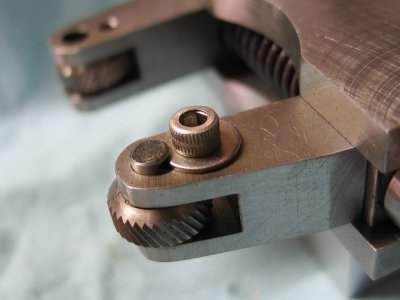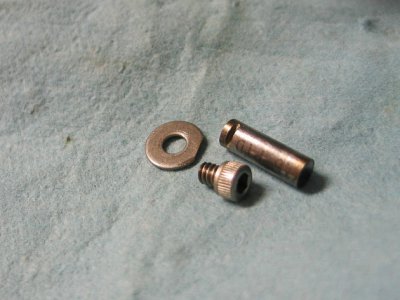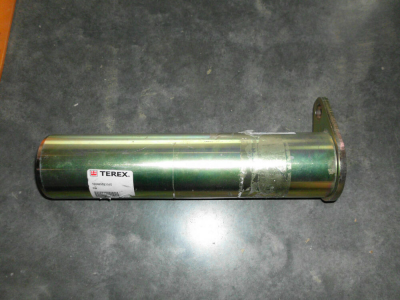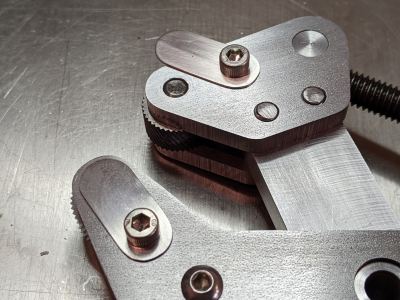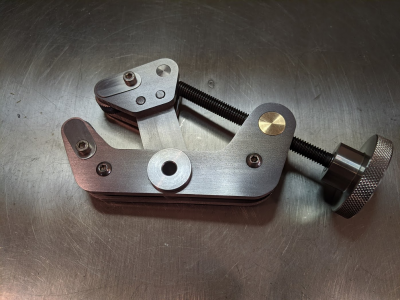- Joined
- Mar 25, 2013
- Messages
- 4,611
It was very difficult to machine all these parts to get optimal spacing for the knurl wheels. My original idea of a hollow axle with a screw through it solved that issue and was workable but not ideal. It required partial disassembly of the tool just to change a knurl. That would be very cumbersome and I am lazy.
I decided to add precision spacers adjacent to the knurls to maintain the arms at .380". These are just hollow tubes so they are easy to nail the tolerance required.
Here you can see one of the new spacers retained by a 10-32 screw.
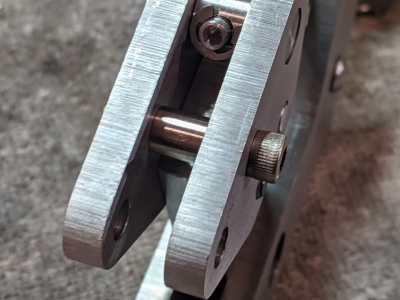
This allows me to use a solid axle made from an old 1/4" drill.
You can see that I clearance drilled one side for the axle. The other arm has a hole that only goes half way through at full diameter. This will allow me to slide the axle in and hold it in place with a small cover plate. There is no significant lateral force on the axles. (I hope)
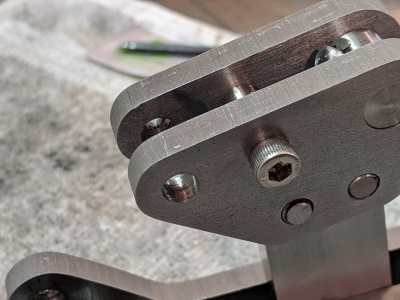
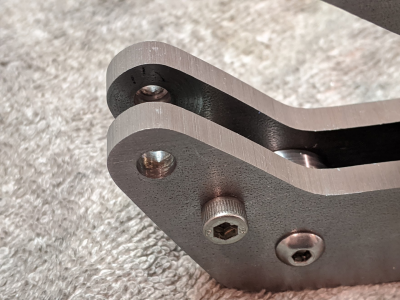
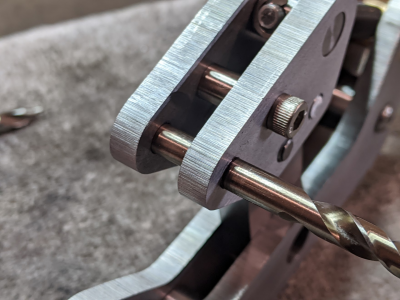
I just need to cut sections from that drill to act as axles. The cover plate with be elongated and held in place by the same #10 screw that holds the precision spacer. To change a knurl you simply loosen the #10 screw, slide the cover plate aside and slide out the axle.
I hope this it the final version but some testing is in order!
Robert
I decided to add precision spacers adjacent to the knurls to maintain the arms at .380". These are just hollow tubes so they are easy to nail the tolerance required.
Here you can see one of the new spacers retained by a 10-32 screw.

This allows me to use a solid axle made from an old 1/4" drill.
You can see that I clearance drilled one side for the axle. The other arm has a hole that only goes half way through at full diameter. This will allow me to slide the axle in and hold it in place with a small cover plate. There is no significant lateral force on the axles. (I hope)



I just need to cut sections from that drill to act as axles. The cover plate with be elongated and held in place by the same #10 screw that holds the precision spacer. To change a knurl you simply loosen the #10 screw, slide the cover plate aside and slide out the axle.
I hope this it the final version but some testing is in order!
Robert


